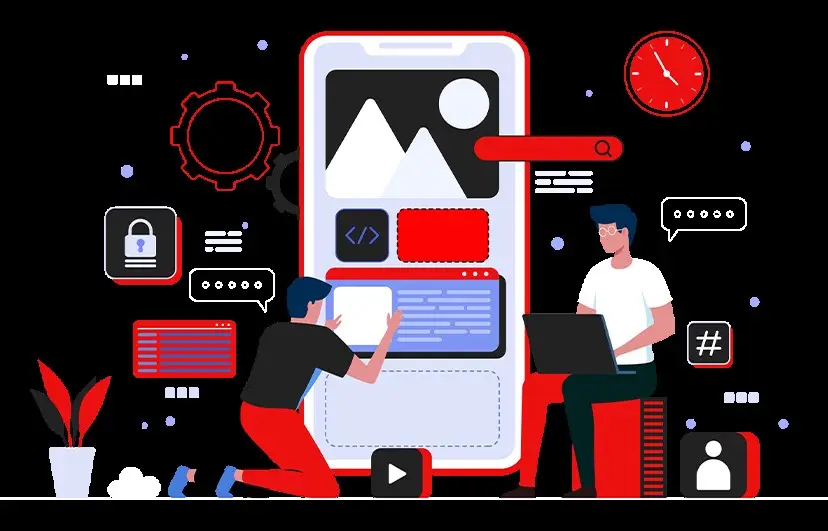
Legacy applications are the foundation of many enterprises, as they handle the essential processes and workflows of the business. But, with technology advancing at unprecedented speed, these legacy systems may turn out to be an obstacle to innovation and agility. Legacy application modernization is essential for keeping the business at a high level, for better performance, and to effectively deal with scale issues.
Today, we will discuss the top 8 ways to transform your legacy apps into modernized ones, illustrating major approaches and noteworthy strategies.
Table of Contents
What is Legacy App Modernization?
Legacy app modernization involves the process of bringing older software applications up to modern technology standards as well as fulfilling business needs. It includes upgrading the backend technology, improving the user interface, boosting speed, and making it compatible with the latest systems and platforms. The main objective of the legacy app modernization is to eliminate outdated code, close any security gaps, increase the number of features, and scale the system.
Key Legacy App Modernization Approaches
1. Replatforming:
The process of replatforming allows you to move your application that was developed on a legacy system to new platforms, such as cloud-based ones like AWS, Azure, or Google Cloud. This methodology is a great alternative that is scalable, cost-effective, and more secure than having an on-premises solution. Without question, legacy to cloud migration services are essential for a smooth transition and optimization.
2. Refactoring:
Here, refactoring means rebuilding the application codebase without having any external behavioral change. Applying the technique helps to achieve high code quality, better performance, and great organization. Legacy modernization services typically include code refactoring as one of the key aspects of their foundation.
3. Containerization:
The idea of containerization is to ensure that the applications are made to fit properly in the containers by using something similar to Docker or Kubernetes. It is a simple application that increases scalability and empowers microservice architecture. From legacy ones to containerized applications that are easy to scale as well as resource-efficient, cloud migrations are just a few of the many options available.
4. Microservices Architecture:
When using the microservice architecture pattern, the monolithic legacy programs are split into small services that are not dependent on each other. By doing this, speediness, size, and fault isolation are features that result from this strategy. The microservice architecture, which service providers may propose to implement for such modernization efforts, is often the favored option.
5. API Enablement:
Modernizing app functionality by creating a new API with which modern apps, without any hindrance, can access thematic data from old apps. Through this method, we endeavor to reduce fragmentation, promote development speed, and help many digital transformation projects be implemented.
6. DevOps Integration:
The DevOps practices during the different stages of legacy app modernization, e.g., development, testing, deployment, and monitoring processes, are facilitated. This option is helpful because it is a tool that helps interpersonal collaboration, shortens the time-to-market, and generally improves the quality of software development.
7. Automated Testing:
Executing the automated testing tools and frameworks during the modernization of legacy applications is a sure way to have complete test coverage, less human effort, and more reliance on the software. Such an approach is critical, as it allows for keeping up with the standards of a high-quality end product during the whole modernization course.
8. Continuous Integration/Continuous Deployment (CI/CD):
Implementation of CI/CD pipelines automates both build, test, and deployment processes, resulting in almost continuous and consistent software releases. This technique encourages flexibility, diminishes launch risks, and develops the atmosphere needed for constant improvement.
Conclusion
Legacy application modernization is no longer just a trend in today’s fast-moving technical world, but a required process to follow. While the industry is rapidly adopting new technologies, legacy systems often tend to be stumbling blocks on the way to further success. Through the consideration of the top 8 techniques to upgrade legacy apps, companies are able to realize the various manners of procedures that are possible.
Scaling and cost-effectiveness are two major benefits of the replatforming approach. When compared with the in-house infrastructure, the cloud platform features offered by AWS, Azure or Google Cloud allow for cost and time savings. Refactoring aims at the improvement of code quality and performance without altering exchangeable parameters; whereas, containerization and microservices architecture facilitate a more flexible and scalable way. APIs and DevOps integration through automated enablement and processes displaying this smoothness are the foundations of digital transformations.
Automated testing and CI/CD pipelines integrate vitally into the software quality maintenance and acceleration of releasing schedules. By employing all these approaches, organizations will have the much-needed tools to help them get rid of or maintain their code, increase security, and meet user demands as they continue to develop and grow. Legacy app modernization is not just a way of remaining significant; it is also a route to securing system longevity, streamlining operations as organizations grow, and sustaining a competitive advantage in the digital world.